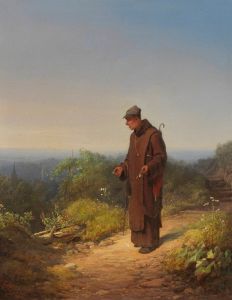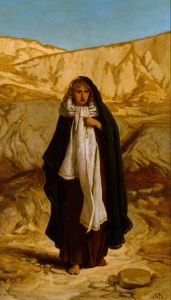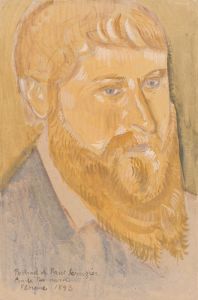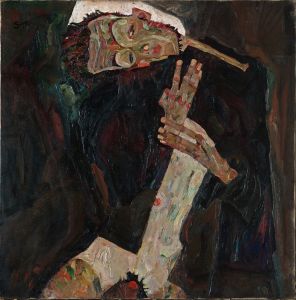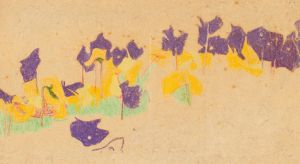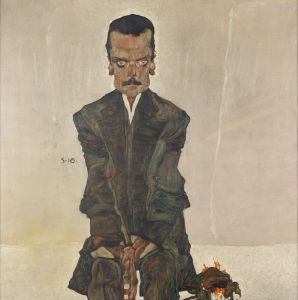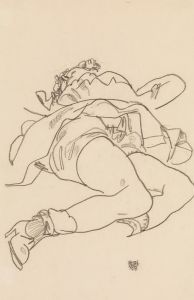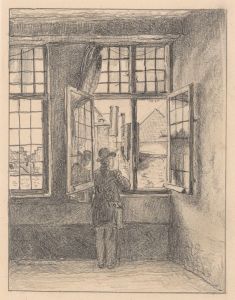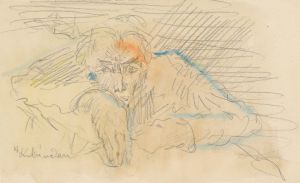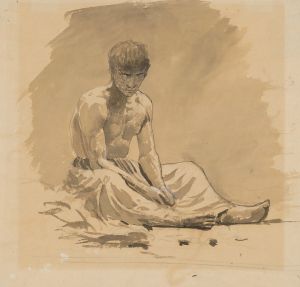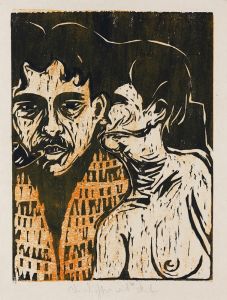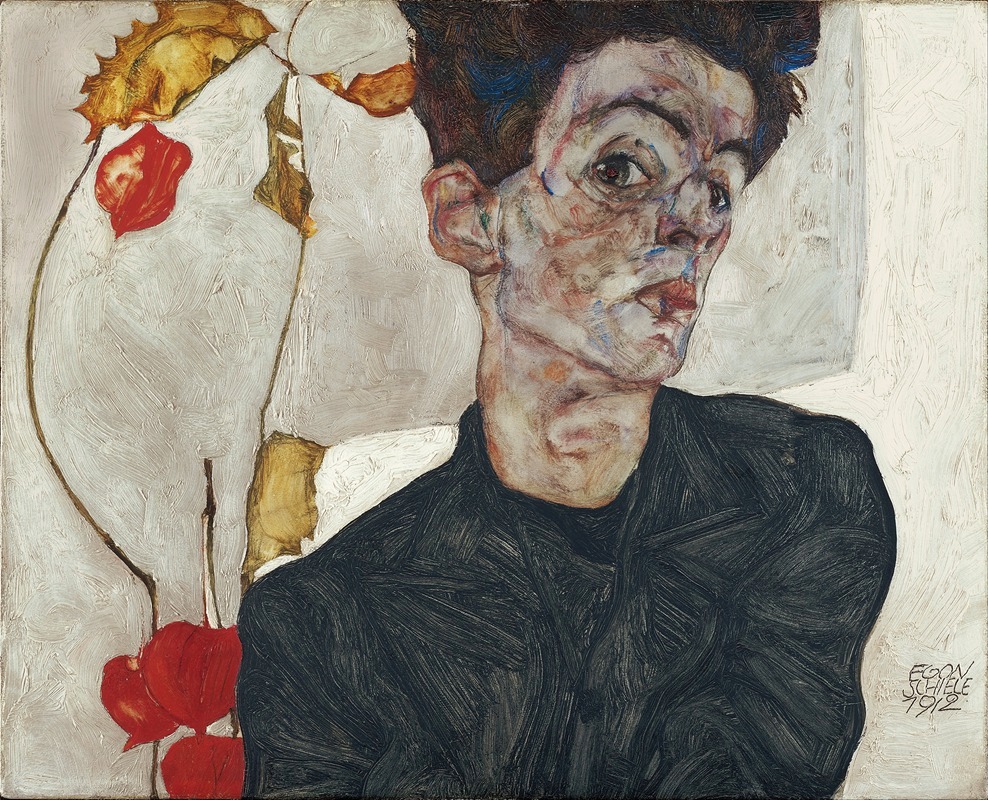
Self-Portrait With Physalis
A hand-painted replica of Egon Schiele’s masterpiece Self-Portrait With Physalis, meticulously crafted by professional artists to capture the true essence of the original. Each piece is created with museum-quality canvas and rare mineral pigments, carefully painted by experienced artists with delicate brushstrokes and rich, layered colors to perfectly recreate the texture of the original artwork. Unlike machine-printed reproductions, this hand-painted version brings the painting to life, infused with the artist’s emotions and skill in every stroke. Whether for personal collection or home decoration, it instantly elevates the artistic atmosphere of any space.
"Self-Portrait with Physalis" is a notable work by the Austrian painter Egon Schiele, created in 1912. Schiele, a protégé of Gustav Klimt, is recognized for his distinctive style that often includes expressive lines and raw emotional intensity. This self-portrait is one of the many that Schiele produced during his career, reflecting his deep interest in exploring the human form and psyche.
The painting features Schiele himself, depicted with a strikingly gaunt and angular face, which is characteristic of his self-portraits. His intense gaze is directed towards the viewer, creating a sense of direct confrontation. Schiele's use of exaggerated features and stark lines is evident in this work, emphasizing his unique approach to portraiture that often borders on the expressionistic.
In "Self-Portrait with Physalis," Schiele incorporates the physalis plant, also known as the Chinese lantern, which is visible in the background. The inclusion of this plant is significant as it adds a symbolic layer to the painting. The physalis, with its bright orange husk, can be interpreted as a symbol of vitality and the ephemeral nature of life, themes that are recurrent in Schiele's work. The contrast between the vibrant color of the physalis and the muted tones of Schiele's depiction adds a dynamic visual element to the composition.
The painting is executed with a limited palette, predominantly using earthy tones that highlight the starkness of Schiele's features. His use of color and line work together to create a sense of tension and introspection, inviting viewers to delve into the psychological depth of the portrait. Schiele's technique often involved a meticulous attention to detail, and this self-portrait is no exception, showcasing his skill in capturing the nuances of human expression.
Egon Schiele's work, including "Self-Portrait with Physalis," is often associated with the broader movement of Austrian Expressionism. His art is characterized by its exploration of themes such as identity, sexuality, and existential angst. Schiele's self-portraits, in particular, are seen as a means of self-exploration and a reflection of his inner turmoil.
During his short life—Schiele died at the age of 28 in 1918—he produced a substantial body of work that has had a lasting impact on the art world. "Self-Portrait with Physalis" is housed in the Leopold Museum in Vienna, which holds one of the largest collections of Schiele's works. The museum is dedicated to preserving and showcasing the art of Schiele and his contemporaries, providing insight into the cultural and artistic milieu of early 20th-century Vienna.
Overall, "Self-Portrait with Physalis" is a testament to Egon Schiele's innovative approach to art and his ability to convey complex emotional states through his distinctive style. The painting remains a significant piece within his oeuvre, illustrating his contribution to the development of modern art and his enduring influence on subsequent generations of artists.





